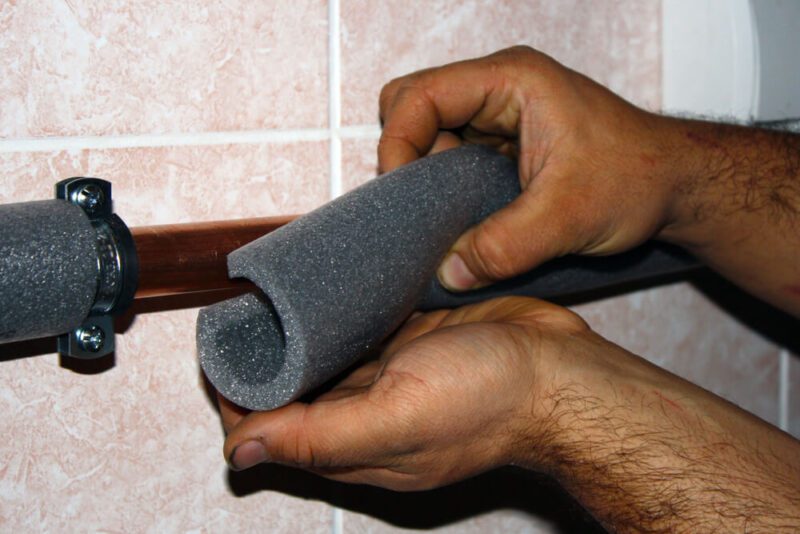Arizona and Nevada are commonly associated with desserts and dry heat. However, the temperature can still drop below freezing on occasion, and when that happens, you want to be prepared. The problem with frozen pipes is that the situation can quickly escalate to having no water supply and extensive damage to your pipes due to frost.
Proper winter plumbing plans are important so that the pipes can be kept defrosted throughout the cold months. Here are some essential steps on how to prevent pipes from freezing in the winter:
 Step 1. Insulate Pipes
Step 1. Insulate Pipes
It’s essential to take action before temperatures drop and insulate any pipes located in unheated areas, like attics, basements, crawl spaces, or pipes running along outside walls. Pipe insulation will help to retain heat within the pipes, preventing them from freezing and possibly bursting.
There are a few ways you can insulate your home’s pipes. Whether you use heat tape, foam pipe sleeves, or thermostatically controlled heat cables, it’s important to ensure you’re taking the necessary precautions to prevent frozen pipes.
Step 2. Keep the Surroundings Warm
The most common reason for frozen pipes is the air temperature around the pipes. If the surrounding pipes inside a house can be kept warm, it will prevent the pipes from freezing outside. Any place in the building or home that is under-heated and has water pipes must be insulated properly to prevent air circulation.
It’s also essential to maintain a consistent temperature inside the home, even when you’re away. Always have your thermostat set to at least 55°F (13°C) or above to prevent pipes from freezing. It’s better for your pipes and home overall to maintain a minimum heat temperature.
Step 3. Seal Any Air Leaks
Any leaks or cracks in the doors or walls must be repaired properly to prevent the leaking of warm air and the entering of cold air. It’s beneficial to shut basement doors and use them only when needed to keep the pipes in the basement at an appropriate temperature. Crawl spaces should be taken into consideration as well.
Step 4. Drain Outdoor Spigots
Temperatures drop well below freezing on cold winter nights. Outside spigots and hose connections should be shut off from inside the house (there should be a shut-off valve), and the water after the shut-off should be allowed to drain out for the winter.
You can cover your spigot with insulation foam from the hardware store to ensure it is protected from the cold weather.
Step 5. Provide External Heat
External heat sources, like heating systems, insulation, or space heaters, can help keep the surrounding air temperature warm enough to prevent the water inside the pipes from freezing. This is particularly crucial during extreme weather conditions when the risk of freezing pipes is higher.
By ensuring that pipes are adequately heated or insulated, you can minimize the risk of frozen pipes and avoid potential damage to your plumbing system and property.
Step 6. Keep Cabinet Doors Open
Leaving cabinet doors open when trying to prevent frozen pipes is important because it allows warm air to circulate around the pipes, especially those located under sinks. When outdoor temperatures drop, pipes in cabinets can be more susceptible to freezing due to a lack of exposure to warm air.
By keeping cabinet doors open, you allow the warmer air from the room to reach the pipes, helping to maintain their temperature above freezing. This can be particularly helpful for pipes located in kitchens and bathrooms, where cabinets often contain plumbing fixtures.
In regions where harsh winter conditions occur, access to water is crucial for survival. That’s why it’s essential to prepare adequately for winter to ensure that water remains unfrozen. This can be achieved by safeguarding water pipes from freezing. Implementing the steps outlined above can effectively mitigate this issue.
To ensure thorough preparation for winter, seeking the expertise of a professional plumber is beneficial. Professional plumbing services can offer tailored solutions and expert guidance, enhancing winter planning efforts and ensuring quality outcomes. When you’re in need of preventative maintenance before the cold weather kicks in, contact Rooter Ranger.

